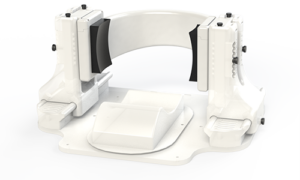First-visit Communication with Doctor Affects Outcomes of Pain Patients

Chronic pain, defined as daily or significant pain that lasts more than three month, can be complicated to diagnose and treat. Studies have shown that, since chronic pain conditions are clouded with uncertainties, patients often struggle with anxiety and depression – something challenging to for they and their doctors to discuss and manage.
A recent study of 200 chronic neck or back pain sufferers found that effective physician-patient communication during the initial consultation helps patients manage their uncertainties, including their fears, anxieties and confidence in their ability to cope with their condition.
Study leader Charee Thompson, communication professor at University of Illinois Urbana-Champaign, said: “We found that providers and patients who perceive themselves and each other as competent medical communicators during consultations can alleviate patients’ negative feelings of uncertainty such as distress and increase their positive feelings about uncertainties such as their sense of hope and beliefs in their pain-management self-efficacy. Providers and patients successfully manage patients’ uncertainty through two fundamental medical communication processes – informational and socioemotional, each of which can have important clinical implications.”
According to the study, informational competence reflects patients’ abilities to accurately describe their symptoms and verify their understanding of doctors’ explanations and instructions, as well as clinicians asking appropriate questions, providing clear explanations and confirming patients’ understanding. The extent to which doctors and patients establish a trusting relationship through open, honest communication and patients’ feelings of being emotionally supported by the physician reflects socioemotional communication competence.
Thompson and her co-authors — Manuel D. Pulido, a communication professor at California State University, Long Beach; and neurosurgery chair Dr. Paul M. Arnold and medical student Suma Ganjidi, both of the Carle Illinois College of Medicine — published their findings in the Journal of Health Communication.
The current study was based on uncertainty management theory, the hypothesis that people faced with uncertainty about a health condition appraise it and decide whether obtaining information is a benefit or a threat. For example, patients may seek information about the origins of a new symptom to mitigate their anxiety-related uncertainty — or, conversely, they might avoid information-seeking so they can maintain hopeful uncertainty about their prognosis, the team wrote.
The study was conducted at an institute in the Midwest composed of several clinics and programs that treat diseases and injuries of the brain, spinal cord and nervous system. Ranging in age from 18–75, those in the study sample had pain that included but was not limited to their neck, back, buttocks and lower extremities. About 59% of the patients were female.
Before the consultation, the patients completed surveys rating how they experienced and managed their pain and their certainty or uncertainty about it. They and the providers also completed post-consultation surveys rating themselves and each other on their communication skills.
The patients rated how well the provider ensured that they understood their explanations and asked questions related to their medical problem.
To determine if patients’ levels of uncertainty changed, on the pre- and post-consultation surveys the patients ranked how certain or uncertain they felt about six aspects of their pain – including its cause, diagnosis, prognosis, the available treatment options and the risks and benefits of those. The patients also rated themselves on catastrophising – their tendency to worry that they would always be in pain and never find relief.
Patients’ feelings of distress were reduced when they and their physician mutually agreed that the other person was effective at seeking and providing medical information, and when the patients felt emotionally supported by their doctors, the team found.
“Patients’ ratings of their providers’ communication competency significantly predicted reductions in their pain-related uncertainty and in their appraisals of fear and anxiety, as well as increases in their positive uncertainty and pain self-efficacy,” Thompson said. “Providers’ reports of patients’ communication competency were likewise associated with decreases in patients’ pain-related uncertainty and marginally significant improvements in their positive appraisals of uncertainty.”
In a related study, the U. of I.-led team found that, for a subset of spinal pain patients, satisfaction, trust in and agreement with their doctor were strongly associated with the doctors exceeding patients’ expectations for shared decision-making and the quality of the provider’s history-taking and people skills. U. of I. graduate student Junhyung Han was a co-author of that paper, which was published in the journal Patient Education and Counseling.
The team wrote that providers and patients need to discuss their mutual expectations for testing, medication and treatment, such as which options are worth pursuing and their potential to meet patients’ expectations for pain relief.
Thompson said that while these studies’ findings highlight the effects that providers’ overall communication skills have on chronic pain patients’ emotions, expectations and attitudes about their condition, the patients’ communication skills matter, too.
“I wanted to challenge the notion that pain patients are frustrated or ‘difficult’ because they have unrealistic standards,” Thompson said. “No matter how high their expectations are, what seems to matter most to conversation outcomes is the extent to which patients’ expectations are met or exceeded.
“Consultations mark what may be a long, challenging diagnostic and treatment journey for these patients, and they could benefit from learning about therapies and strategies to help them manage their pain and uncertainties,” Thompson said. “Giving them the tools and language to communicate their symptoms and concerns to providers could make their interactions more productive. Learning about the uncertain nature of pain may validate their fears and anxieties, while awareness and education about the various treatment options and therapies such as cognitive behavioural therapy could enhance their coping and dispel feelings of helplessness and fear.”












